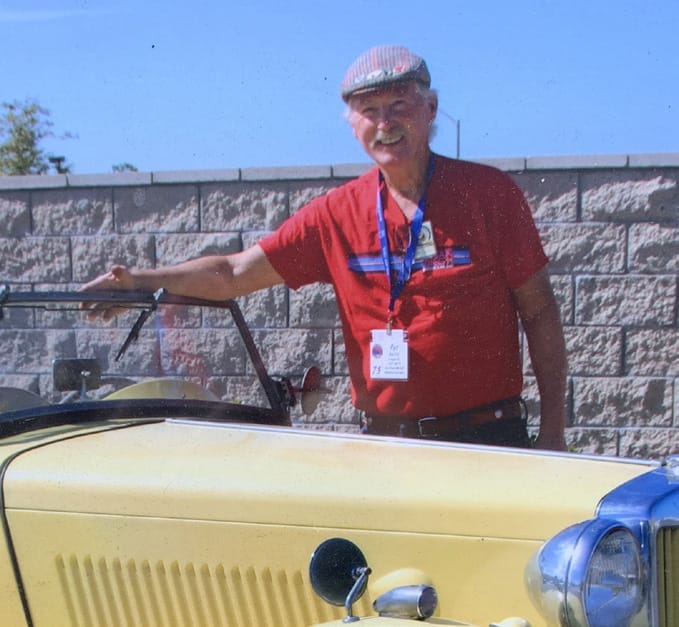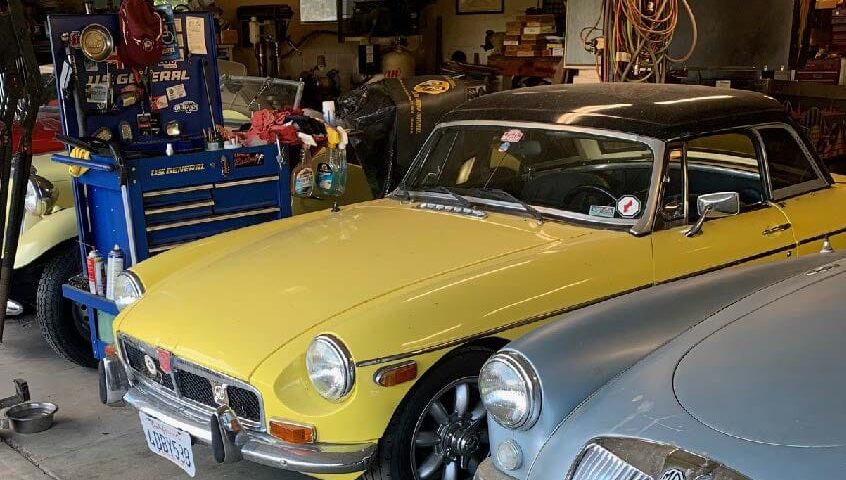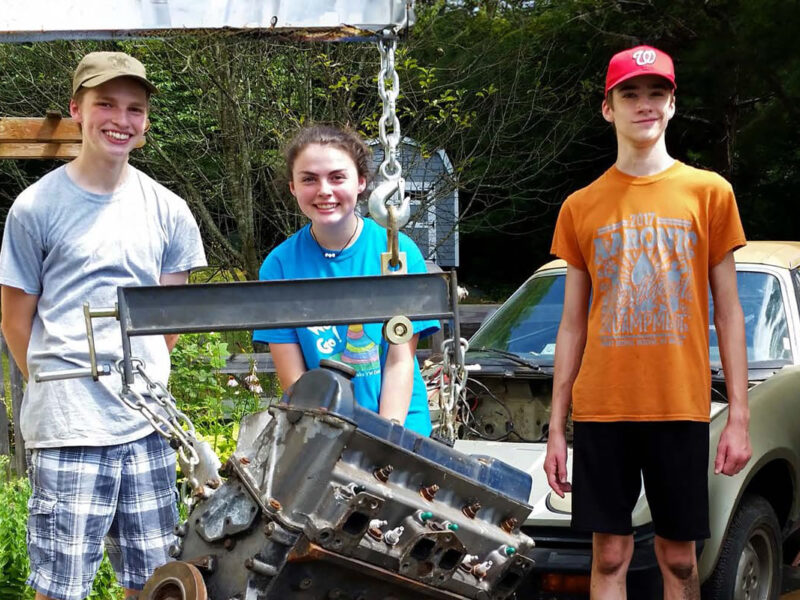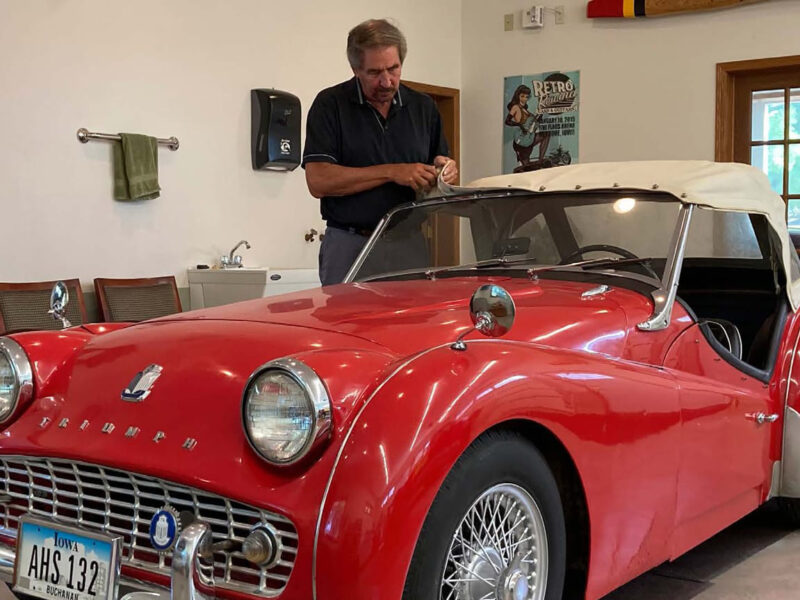By Pat Garity
I wanted to share a few basic safety practices for working on our vintage sports cars.
First of all, be kind to your body. Lift with your legs not your back. Gloves will protect your hands. Treat yourself to a good pair of mechanics gloves and a box of rubber gloves. No need for permanent grease stains under your nails—your spouse will thank you. Long hair should be tied back or tucked in your shirt. Gas on your skin can burn. I tie a rag around my wrist to prevent gas dripping down my arm when changing fuel pumps or senders. Gas on your forearms may not cause any discomfort, but you’ll know it when it reaches the sensitive skin of your armpits. Trust me. And treat yourself to a good floor jack. My memories of working on my first car with a tippy scissors jack are better left to the realm of memories than reality.
While lifting a car with a jack, release the parking brake to allow the car to roll a bit as the jack lifts the car. Likewise, the jack should be able to roll. Small pebbles or bits of debris will lock up the wheels. Keep your floor clean. Be aware: jacks can leak and fail, and more than once I have seen cars slip off the jack’s cradle. It’s a common cause of serious injuries and even death. Do take the time to use jack stands. I like to put the stands under the frame if possible. And then I check to see that the car is stable before I crawl underneath.

Wearing safety glasses is a great habit to practice, especially when working on batteries. While charging, batteries produce hydrogen gas. Add a spark from the electrical connections and bang! Watch a video of the Hindenburg to see how this stuff burns. Usually, the first instruction for any electrical repair is “remove the ground cable.” After a dead short melts down the wiring harness it’s too late.
Another rare but dangerous problem is the fan on the water pump. The metal blades can crack and break sending a blade flying with tremendous force. Make it a practice to stand out of the trajectory of the fan while the motor is running. Also, make a backup system for the hood prop. I think I still have some scars on my noggin from bonnets that decided to land on my head. I use an old adjustable hiking stick or a rope tied to the bonnet that extends to the trunk handle when I want the hood to open really wide. Vise-Grip® pliers properly applied can hold open many bonnets. Having a Spitfire or a Bugeye bonnet closing on you will make a believer out of you!
Brakes are the most important system on any car. Always double check the brake pedal before your test drive. After you have retracted the caliper pistons and slipped in new pads. Do you have a “good pedal”? The answer is no! Always check the pedal before you drive.
FIRE! Is a word you hope to never have to yell. Be careful when dealing with gasoline and the aforementioned electricity. Having the proper fire extinguisher handy is a must. Read the label, know how to operate it, and put the extinguisher where you can grab it quickly if needed.
And finally, a note about verbal warnings. If you are lucky enough to have a pal working with you, a dangerous situation can exist with someone under the bonnet and someone else sitting in the car. The bonnet blocks your vision. You must warn your buddy before you spin the motor. Fingers can easily get caught in a spinning motor. Let your assistant know you’ll holler “CLEAR!” before you want them to crank that motor.
Be safe and have fun, my friends!








'Safety First!' has no comments
Be the first to comment this post!